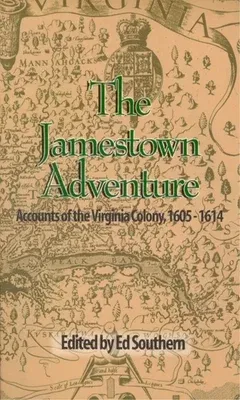In December 1606, three ships carrying 144 passengers and crew sailed
from London bound for a land that had already claimed more than its
share of English lives. In May of the following year, little more than
100 men would disembark to settle on a small peninsula in the James
River. Eight months later, only 38 men were still alive in the fort they
had named Jamestown. Jamestown is well known as the first permanent
English settlement in the New World; largely unknown is how fragile that
permanence was. Most Americans have a general awareness of the dangers
faced on any frontier, but not the particular hardships that confronted
the Jamestown colonists--starvation, disease, conspiracy, incompetent
leaders, and, of course, intermittent war with the neighboring Native
Americans. This volume collects contemporary accounts of the first
successful colony the first thirteen United States. The earliest text
dates from 1605, two years before the first landing; the last describes
events up to 1614, when the marriage of Pocahontas and John Rolfe
secured a brief measure of peace for the beleaguered colony. Most of the
accounts were written by the colonists themselves; others reflect the
perceptions and expectations of investors and observers back in England,
while two reveal the keen and hostile interest taken in the colony by
England's chief rival, Spain. Several of them were written for
widespread publication; others were either private letters or reports
meant only for certain audiences. These narratives take the reader from
the London stage to Powhatan's lodge, from the halls of royal power to
the derelict hovels of the Starving Time.They show the modern reader
what an adventure the founding of English America was--the desperate
battles and fraught negotiations with Powhatan, the political intrigues
in Europe and Virginia, the shipwreck that inspired Shakespeare's The
Tempest, the discoveries that thrilled the colonists, the discoveries
that broke their hearts. Ed Southern, a graduate of Wake Forest
University, is a descendant of John Southern, who arrived in Jamestown
in 1619.
Ed Southern was a Wake Forest senior studying in London when he walked
into the 200-year-old bookshop Hatchard's and realized how excited the
possibilities presented by shelves full of books made him. After
graduation, he worked at Reynolda House Museum of American Art. Hanging
around after he finished setting up for lectures, concerts,
performances, and classes gave him an excellent postgraduate education
in the liberal arts, which came in handy later when he dropped out of
graduate school. He went to work for one of the major bookselling chains
and was a member of the training team sent to open the company's first
store in London, a massive four-story media emporium on Oxford Street.
It was a bit like coming full circle, but not quite. A year later, he
left the bookstore and went to work for John F. Blair, Publisher, as the
sales director. He presently serves as the executive director of the
North Carolina Writers Network.

